For centuries, the Stone of Destiny has been shrouded in mystery, legend, and political intrigue. A sacred relic of Scottish and British monarchies, it has witnessed the coronation of kings and queens for over 700 years. Recently, laser scans revealed hidden Roman numerals on its surface, reigniting debates about its origins and a daring 1950 heist that left it fractured. Could these markings unveil a long-lost secret? And what happened to the missing fragments of this legendary stone?
The Historical Legacy of the Stone of Destiny
Origins and Legends
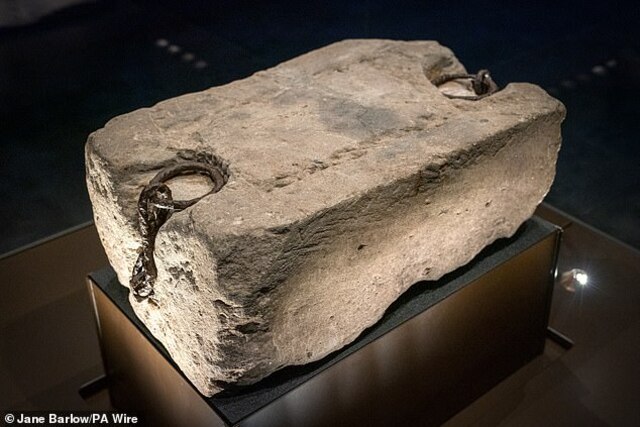
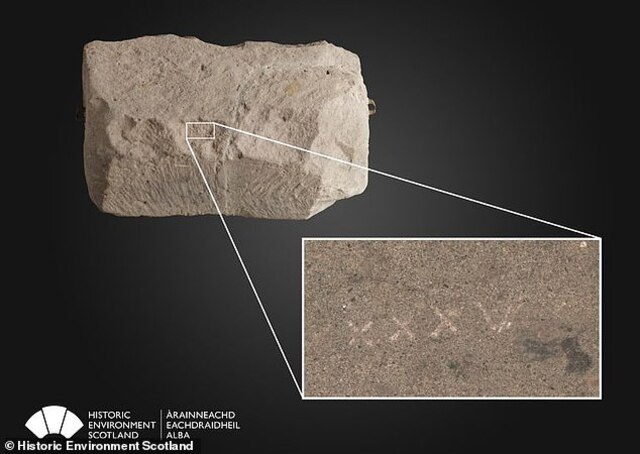
The origins of the Stone of Destiny are deeply entwined with myth and folklore. One of the most famous legends claims that the stone was Jacob’s Pillow, mentioned in the Bible’s Book of Genesis—the very stone upon which Jacob rested when he had his divine vision of a ladder reaching into heaven. According to this theory, the stone was transported from the Middle East to Ireland, then to Scotland, where it was used for the coronation of ancient Scottish kings.
Other accounts suggest that the stone was brought to Scone Abbey, a sacred place in medieval Scotland, by Fergus Mór, an early Scottish king. Regardless of its true origins, what is certain is that for centuries, it was used in the inauguration of Scottish monarchs, symbolizing their right to rule.
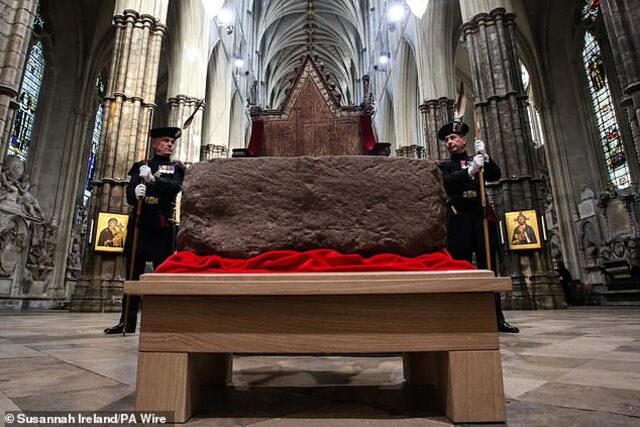
Video
Check out the video to uncover the mysterious history of the Coronation Stone, also known as the Stone of Destiny. This ancient artifact holds secrets of royal tradition!
Seizure by King Edward I
The Stone of Destiny became a prized possession of the English Crown in 1296, when King Edward I invaded Scotland. After defeating the Scots, Edward ordered the stone to be removed from Scone Abbey and taken to Westminster Abbey, where it was built into the Coronation Chair. This act was meant to demonstrate England’s dominance over Scotland, ensuring that every future English monarch was crowned above Scotland’s most sacred relic.
For over 700 years, the stone remained in Westminster Abbey, serving as a symbol of both unity and subjugationwithin the British Isles.
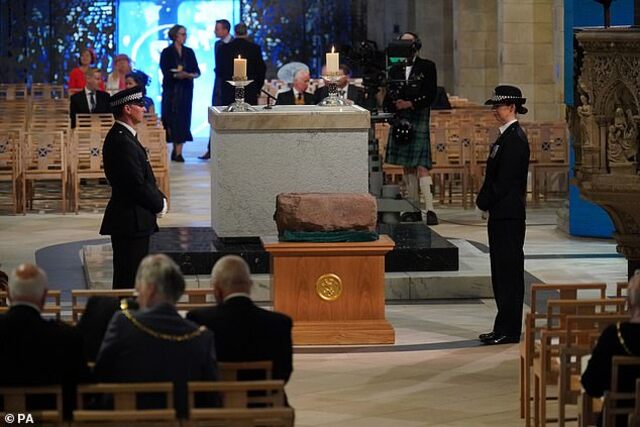
The 1950 Theft and the Enigmatic Restoration
On Christmas Day in 1950, four Scottish students—Ian Hamilton, Gavin Vernon, Kay Matheson, and Alan Stuart—broke into Westminster Abbey and stole the Stone of Destiny. Their act was a statement of Scottish nationalism, seeking to return the stone to Scotland as a symbol of independence.
However, their daring mission did not go as planned. While carrying the 335-pound stone, they accidentally dropped and broke it into two pieces. The students smuggled the broken stone back to Scotland, where it was later repaired by Bertie Gray, a Scottish stonemason and nationalist.
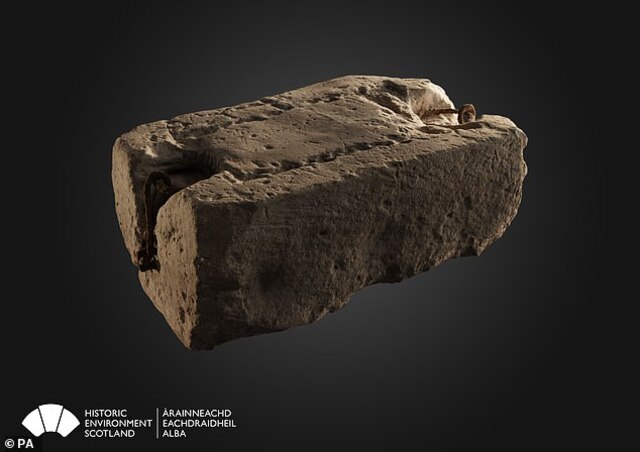
Gray repaired the stone by inserting a brass rod to hold the pieces together. But recent discoveries suggest he may have also left a secret message on the stone. In 2023, laser scans revealed Roman numerals (XXXV) etched onto its surface.
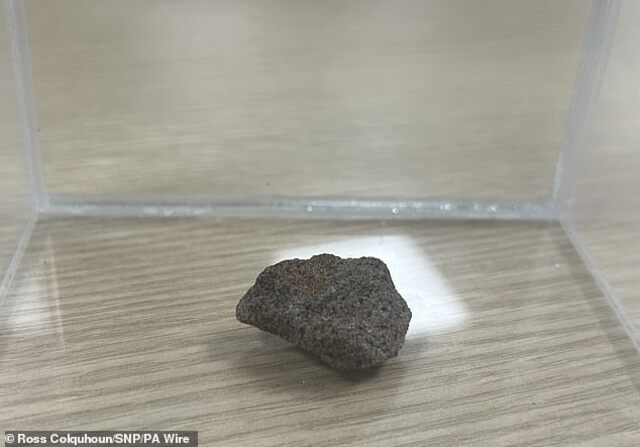
According to Professor Sally Foster of Stirling University, this marking may signify that the stone is actually one of 35 pieces—meaning that 34 smaller fragments were lost or secretly kept after the repair. This raises the question: where are the missing pieces today?
The Search for the Missing Fragments
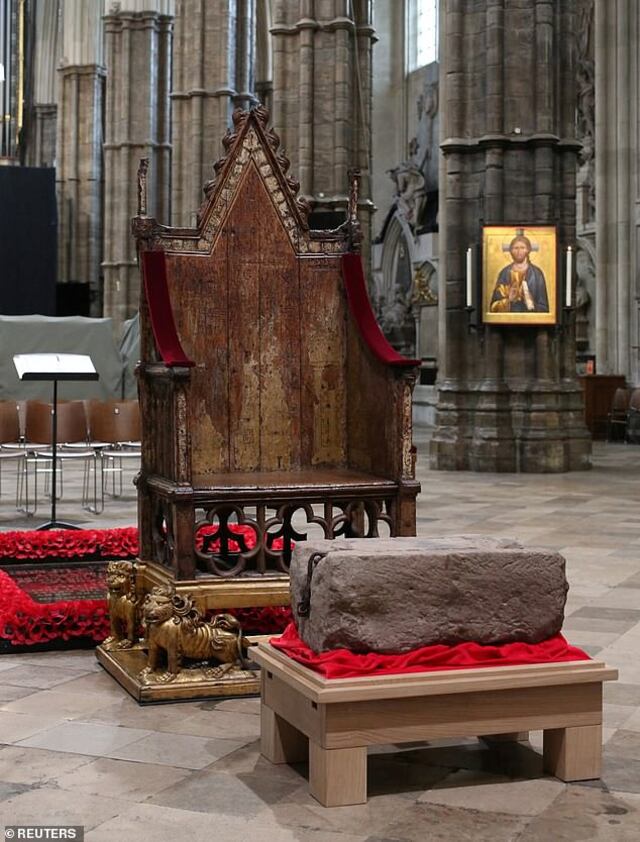
More than 30 fragments of the Stone of Destiny are believed to have been separated during its repair in 1951. Over the years, rumors have suggested that some of these pieces were kept as souvenirs by Scottish nationalists. One fragment is known to be in the possession of former First Minister of Scotland Alex Salmond, while another ended up in Orkney.
Professor Foster and her team are now searching for the lost fragments to piece together the full history of the stone. If enough pieces are found, the stone could potentially be fully restored—but would this challenge its authenticity?
The Stone’s Journey Back to Scotland (1996 – Present)
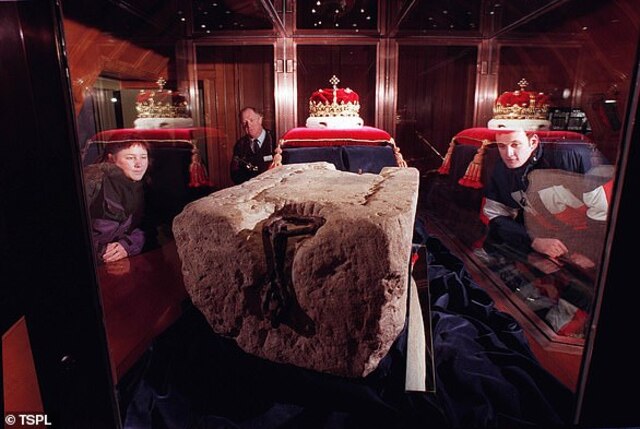
In 1996, after 700 years in England, the British government agreed to return the Stone of Destiny to Scotland as a gesture of goodwill. On November 30, 1996, the stone was transported to Edinburgh Castle, where it was put on display in the Crown Room, beside the Scottish Crown Jewels.
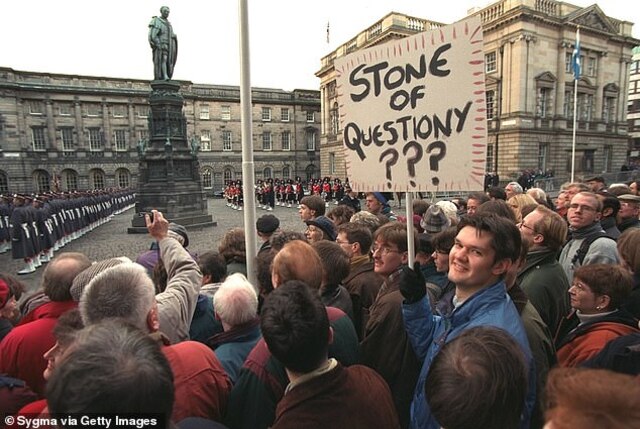
In March 2024, the stone was moved once again—this time to Perth Museum, near Scone Abbey, where it originally belonged. Many Scots have questioned why the stone was allowed to leave Scotland again in 2023 for the coronation of King Charles III. Some argue that it should remain permanently in Scotland as a symbol of national heritage.
The Stone’s Role in the Coronation of King Charles III

Despite growing nationalist sentiment in Scotland, the Stone of Destiny was transported to Westminster Abbey for King Charles III’s coronation in 2023. It was placed beneath the Coronation Chair, just as it had been for previous monarchs.
The transportation of the stone was carried out in secrecy, with a highly secure military operation to prevent theft or protest. Although some Scots believe the stone should have stayed in Perth, its temporary journey to Westminster reflects its continuing role in British royal tradition.
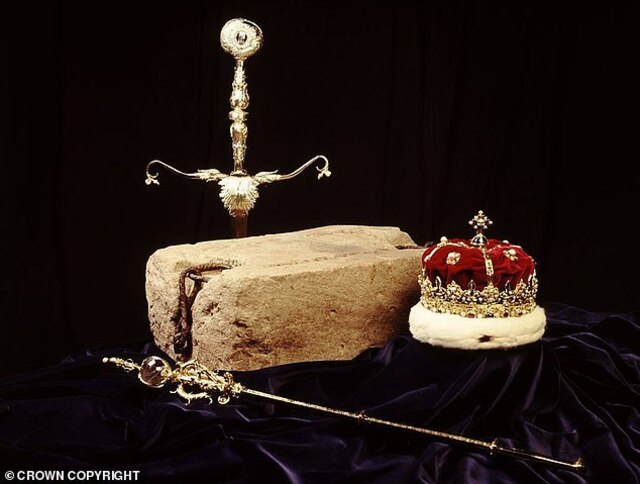
The Stone of Destiny’s Controversial Origins
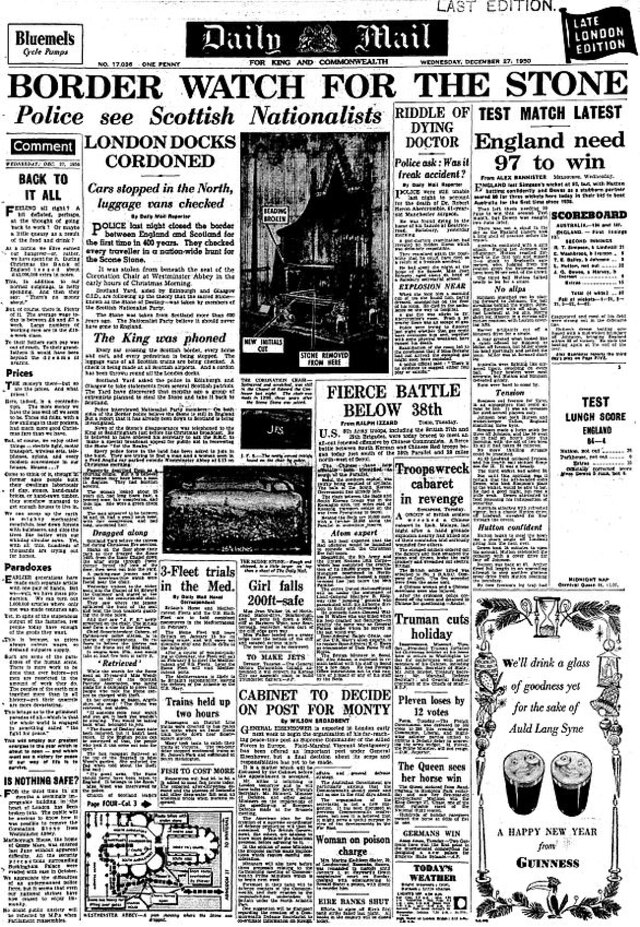
While many believe that the Stone of Destiny used today is the original, others speculate that King Edward I was deceived in 1296. Some historians suggest that Scottish monks at Scone Abbey may have hidden the real stone and given Edward a fake.
Recent geological studies support this theory. The stone is made of red sandstone, a material common in Scotland but not found in the Middle East—casting doubt on the legend that it originated as Jacob’s Pillow.
Conclusion: A Mystery Still Unfolding
The Stone of Destiny remains one of the most enigmatic artifacts in British and Scottish history. Its centuries-old legacy, daring theft, and recent discoveries continue to captivate historians and the public alike.
With the revelation of the Roman numerals, the search for missing fragments, and ongoing debates over its true origins, this ancient relic still holds many secrets waiting to be uncovered.
As Scotland and England continue to wrestle with questions of history, identity, and monarchy, the fate of the Stone of Destiny remains as uncertain as ever. Will it ever be returned permanently to Scotland? And could we one day uncover the full truth behind its mysterious past? Only time will tell.
Video
Watch the video to learn about the removal of Scotland’s Stone of Destiny in this fascinating BBC World Service feature. The story behind it is full of intrigue and history!



